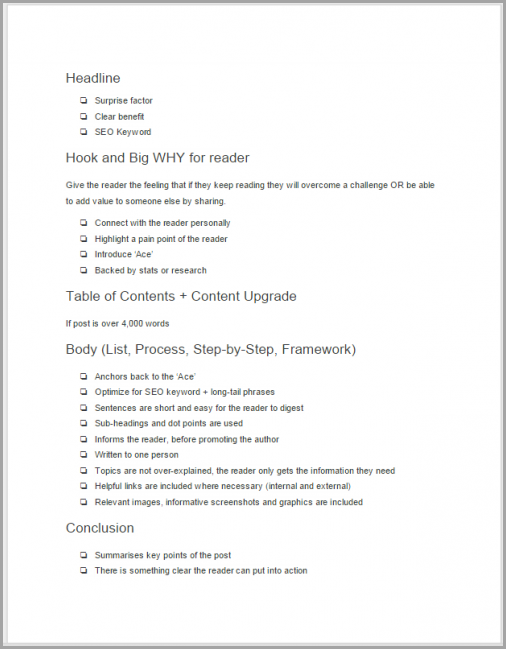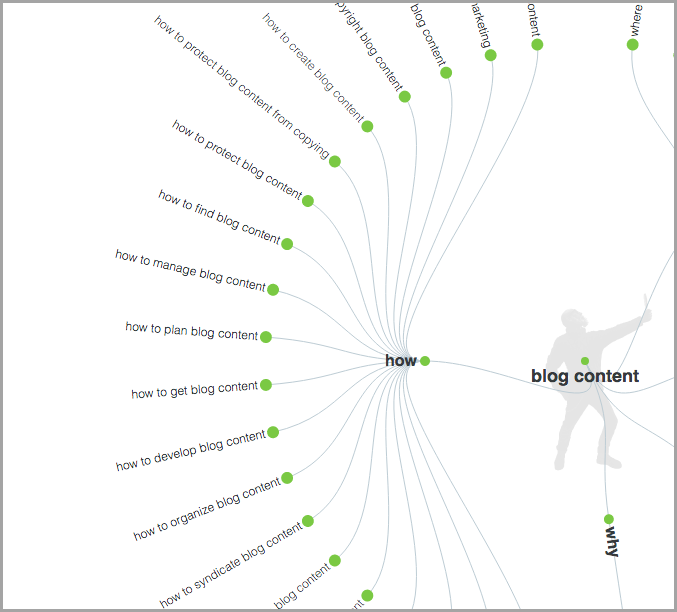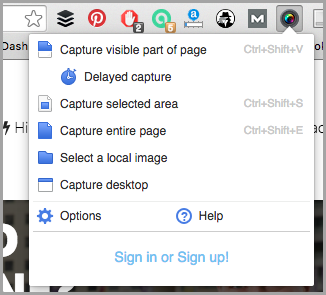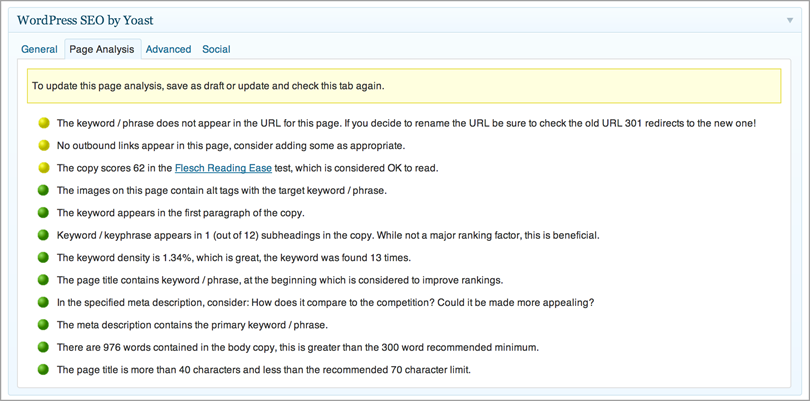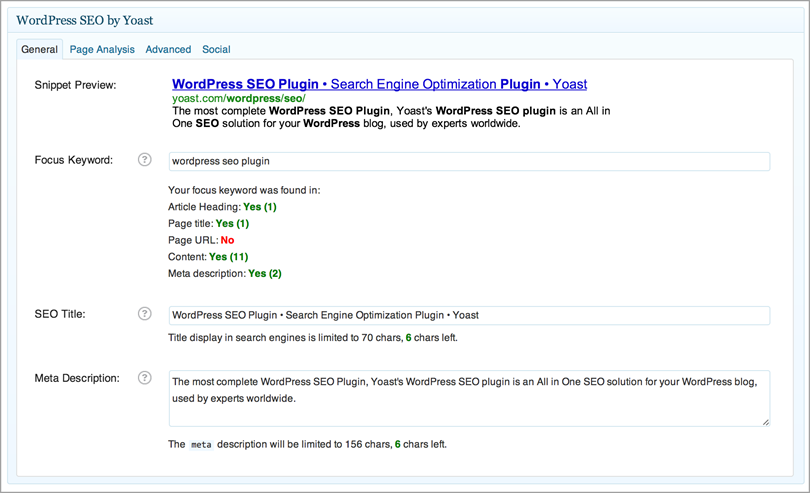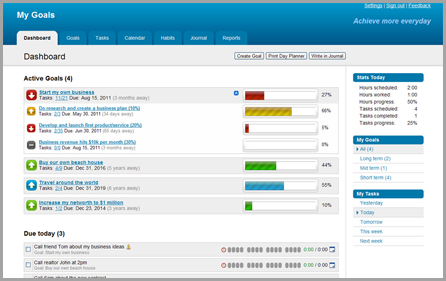

Don’t beat yourself up about it… We’ve all been there.
Meticulously preparing a content strategy, and mapping out blog post ideas for months in advance, only for it all to be derailed when something more important comes up.
Your intentions are good. I’m not questioning that. But consistent content isn’t easy to come by.
Sometimes it feels like Groundhog Day; a repetitive loop of missed deadlines, knee jerk reactions and inconsistent posting schedules.
When you get back to the beginning of the loop, once again you tell yourself (and your team) that things will be different. This time you’ll actually stick to the schedule you set.
And you do for a little while. Until clients come knocking, your kids need picking up, or perhaps you just don’t feel inspired one day.
So you push things back a week… and a week… and a another week. Until it all just feels too hard and you’re back at square one again.
If this scenario describes the way you feel sometimes you aren’t alone.
According to the Content Marketing Institute 57% of B2B marketers rate “Producing Content Consistently” as one of their top challenges.
Image Source: Content Marketing Institute
This recurring challenge is something we face time and time again with our clients here at Blogger Sidekick, and unfortunately there is no magic formula to solving it.
However, what we HAVE learnt is there are a lot of things you can do to try and break the trend, get yourself out of a rut and re-energize your content marketing agenda. I’d like to share 23 of those with you right now.
Part 1 – Time Savers and Productivity
1. Plan content in advance
This is without a doubt the best strategy for maintaining consistent content on your blog, but it’s not easy.
The idea is that you get a whole bunch of blog content pre-prepared to about 70-80% of what it will be when you publish. The structure, dot points, examples, images etc.
Then you stockpile it.
What this does is whenever you are overrun with other priorities, you can draw from this library of pre-prepared content and publish it by topping and tailing these 80% posts with an intro and conclusion.
In an ideal world you wouldn’t let this stockpile of content ever get below about 2 or 3 articles.
Of course this actually requires you to create all of these blog posts in the first place, which brings us back to the original challenge. But here are two quick tips for making it work;
- If you ever have down time when you aren’t as busy, dedicate it to producing multiple articles rather than just one.
- Hire a blog writer or researcher to stock up your content bank for you. Get them to write 5 to 10 articles at once, not only will this be cheaper overall, but it also gives you the piece of mind that you won’t be starting from scratch when you REALLY need content.
Then, write when you have time and pull from your content bank when you’re too busy to keep up.
2. Create a blogging template or checklist
You probably intuitively know all the elements of an effective blog post, but when you’re rushing to get through the writing process it’s nice to have a checklist so you cover all your bases.
Here’s a screenshot of the one that I use;
I have a version of this printed and on my desk so I can refer to it every time I write.
If you’re interested, you can get your own copy of this checklist in the ‘Write Like a Boss Bundle’.
3. Streamline your keyword research
Keyword research can be a huge task if you let it be. Before you know it you are off down a rabbit hole and the whole day has gone by. But it’s important because it’s your way to communicate with search engines.
Here is a keyword research method I use regularly that shouldn’t take more than 10 minutes and can bolster up your blog content;
- Take your initial keyword (e.g. “how to create consistent content”) and type it into Google
- Then scroll down to the bottom of search results and see the “searches related to” section
- These are some great related keywords that you can sprinkle throughout your content
Answer the Public is another quick tool you can use to find long tail phrases to include in your content.
Here I typed in “blog content” and got a cool semantic map of related questions
4. Mine content to create a post structure
No matter how knowledgeable you are about a certain topic, writing an entire post from scratch straight from your head is slow work.
You can speed things up by mining similar content from other bloggers to create your post structure. (Hint: I hire people to do this part)
Here’s how;
- Type your target keyword into Google
- Click on any articles on the first 2 pages of results that are reputable or sound interesting
- Skim through the articles and jot down some key points and consistent themes you identify
- Organize your notes into a logical structure and add any missing details you can think of
- If you’re really feeling motivated, rinse and repeat the process with other platforms (e.g. Buzzsumo or SlideShare) to make a mega outline
5. Speed up image editing
Managing the images you use in your posts can be very time consuming. But there are some tools and plugins you can use to speed up the process.
One I like to use is Awesome Screenshot;
It’s a plugin that captures screenshots and lets you edit them immediately, like this;
Another great couple of screenshot tools are Snagit and Skitch.
6. Use plugins for SEO
SEO is another blogging task that can take a lot of time to complete. I recommend using a plugin to speed things up.
If you’re on WordPress, SEO by Yoast is a winner. It has a lot of features, including analyzing your text and suggesting SEO improvements.
Simply indicate your focus keyword, write your SEO title, and add your meta description all in one place;
Image Sources: SEO by Yoast
7. Leverage voice-to-text technology
Sometimes inspiration strikes when you simply can’t sit down and write something. Or perhaps you just don’t like writing at all, but you still want to make the most of these moments.
Using voice-to-text technology can help you get your thoughts recorded quickly, and turn them into a blog post.
If you use Google Docs, just click “Tools”, then “Voice typing…”
A little widget will appear that records your voice;
Or you can simply record something on the microphone of your smart phone and then get a service like Speechpad to transcribe it for you.
Once you have the copy, use an editor to clean up the text and put your final touches on it as a blog post.
8. Make the most of a content calendar
You’re much more likely to keep your blogging consistent if you have a set plan for your monthly content. If it’s just in your head, then it’s never going to get done.
You can do this with something as simple as a spreadsheet, or to create even more accountability use a plugin on your blog, like the Editorial Calendar for WordPress, or CoSchedule.
9. Do things in chunks
This is perhaps my favorite productivity hacks, and one I swear by when it comes to creating consistent content.
If you have a set number of blog posts planned for the month, you can speed up the writing process by “chunking” specific tasks together and doing them all at once.
This is especially time saving when developing headlines. For example if you use a headline analysis tool like CoSchedule or the Emotional Marketing Value Headline Analyzer, you can save time by perfecting 20 headlines at once, rather than one at a time.
Refer back to your blog post checklist to see what other tasks you can tackle in chunks; writing introductions, keyword research, sourcing images, coming up with blog post topics etc.
10. Remove all distractions
If you’ve set aside time to write, make the most of it by removing all your distractions.
Pick a time slot in your calendar every day, or every week, that is dedicated to writing. Then initiate a string of symbols.
Turn off your phone. Switch off email notifications. Shutdown your internet browser. Eliminate any clutter at your work station. Make it clear to everyone who could possibly distract you that you have an important task to do – don’t accept disruptions unless they are genuinely urgent.
Research has shown it takes an average of 21 minutes to regain focus after being distracted.
11. Set goals
Goals are great motivators to get things done, so turning blogging into a quantifiable task can make it more approachable.
Consider making short and long term goals to boost your motivation.
For your long term goals, create some accountability by sharing them with family and friends.
If you find goals motivate you well, take advantage of a goal tracking app like Goals on Track to set, monitor, and evaluate your progress towards your blogging goals;
Image Source: Goals on Track
12. Reward yourself (and others)
Growing your business is a great reward for your blogging efforts, but often it isn’t enough for the day to day motivation because you can’t SEE it. Creating tangible rewards that you can focus on often do the trick and help spur motivation.
For daily goals, a reward can be as simple as having an extra beer in the evening, or ordering a pizza. For long term goals, it may be something more enticing, like finally buying that new camera you wanted, or a Saturday at the beach.
Take this same mentality into how you motivate your team to produce regular content.
What do they truly value that you can give them? What are you willing to give up in order to achieve your content marketing goals as a business?
You’d be surprised at how things you perceive to be of low value, are actually considered significant motivators for your staff.
13. Stay on task
When I sit down to create content and don’t feel motivated, my mind often wanders to 15 other things I could be doing at that moment instead.
Considering multitasking decreases productivity by 40%, it’s important to stay on task during these moments.
If you’re one of those people whose mind tends to wander and mouse clicks follow suit, consider using an activity tracking tool like RescueTime.
It tracks how much time you spend on different applications and websites (including social media). The results might guilt you into staying on task.
14. Take a break
You don’t always need to be creating more content, especially if you don’t have the time to invest in quality.
Being “consistent” doesn’t mean you need to pump out 5 low-quality articles a week, it just means you need to set expectations with your audience, your team and yourself and stick to them.
So you’re better off producing less content and focusing on quality, promotion and optimization. Rather than spinning your wheels trying to post a new blog every other day.
Moz and Buzzsumo found that 75% of blog posts they analyzed had 39 or fewer shares.
Image Source: Buzzsumo
They also found that the kind of content that does get a lot of shares (and links) is relevant, useful, and comprehensive (lengthy).
If you are purely racing to create MORE, and sacrificing quality as a result, your posts will be less effective.
So rather than doing everything you can to keep a steady stream of content when you don’t have the time, allow yourself to take a break.
Then come back from your hiatus, and write something really high quality.
As it turns out, taking breaks is a major strategy of the most productive workers.
Image Source: Sumohacks
Part 2 – Ways to Outsource or Delegate
15. Recruit your internal team members
Pass off some of the blogging burden to internal team members who can offer their knowledge and expertise to your audience.
This will not only give you your time back, but it will also improve the perception of your team members, and your brand in the industry.
Having your internal team members contribute will help humanize your business, in addition to helping you keep up on your posts.
Encourage them to contribute with incentives such as money, benefits or extra vacation leave.
16. Invite guest contributors
To attract expert guest contributors (who will give you high-quality content for free) you need to find a win-win.
They want exposure, brand awareness, traffic, leads… Plus they want a warm fuzzy feeling inside that they are actually getting noticed.
When you are asking people to contribute to your blog you need to understand what they value and put that information in front of them. Things like average social shares on blog posts, email subscriber numbers and social followings, as well as other experts that have contributed in the past to build your credibility.
Just like anything, you will need to start small and build your way up, but as you gain momentum it will become easier and you will start getting the experts you really want.
Plenty of businesses have a page setup to entice guest post contributions;
You can set one up as well, or you can approach people individually.
17. Use customer and audience data
If you’re a marketer, you probably have plenty of data from your customers that you can turn into content.
Think about the number of interactions people have with your business across email, social media, your website and an array of other platforms that record information. Use this data and insights to your advantage by turning them into interesting blog posts.
You can also draw on qualitative customer data as well, such as FAQ’s, comments on other posts, social media interactions etc.
How does this help you create consistent content?
It’s more of an indirect tactic, but it solves the “I don’t know what to write about problem”. For example, you could publish a monthly customer insights blog with your latest customer data and information. Once you have a format locked down, this will essentially write itself every month and you can outsource it, or get someone internally to publish it. Saving you time and energy in the process.
18. Create case studies
Your customer data can also be turned into case studies (success stories or customer testimonials).
Case studies are perhaps the best piece of blog content you have at your disposal when it comes to closing sales, especially if they are embedded with results-driven figures and real-life stories.
They “show” instead of “tell” prospects what you do, and give a behind-the-scenes look at how your business operates.
The great thing about case studies is they aren’t actually that hard to create. Once you’ve put together one case study, you’ve got a formula that is replicable time and time again.
As I said before, once you have a formula you don’t have to do any of the legwork yourself anymore. Just come in and add the last 5% of polish before you hit publish.
19. Tap into user-generated content
This one’s a bit out of the box, but it’s a doozy.
User-generated content is a great way to whip up some consistent content for your blog without doing much work yourself.
Collate quotes from social media, interview customers or audience members on your list, or run a social media contest to get user generated content.
For example, Chobani yogurt ran a contest asking customers to submit videos and images about why they love their yogurt;
Image Source: Hubspot
You can do something similar, and feature the submitted content on your blog.
20. Send out a survey
Another way to capture user-generated content is to send out a survey to your email list, then use the results to write a blog post.
The key is to collect data that would interest your audience, such as industry trends, user opinions or customer success stories.
You can easily create a survey with Survey Monkey, Typeform, or Google Forms.
21. Do a content roundup
Instead of writing your own content, you can curate posts by others on a certain topic in your niche. Or create a list of the “Best 50 [INSERT TOPIC]” things your customers care about. This is called a “content roundup”.
They are a really easy way to drum out a bunch of blog posts, not to mention if you collate some great information it’s extremely useful for your readers.
22. Hire a writer
Another way to keep your blog content consistent is by hiring a writer to make bylined contributions to your blog, or hiring a ghostwriter to write under your name.
Paying for content is definitely on the rise. According to Hubspot’s latest State of Inbound report, businesses are using a combination of sources to write their content;
Image Source: State of Inbound
You can pay for writers on a post by post basis at a content mill, such as:
But just keep in mind that these writers aren’t paid that well and there’s no guarantee they have experience in your niche. You get what you pay for.
Another option is to post a job on freelance sites like Guru or Upwork to find a writer with the right experience to work with you one-on-one. (This is my preferred option)
Or you can use Google to find a writer in your industry, here’s how:
- Think of a popular blog related to your niche. I chose Duct Tape Marketing.
- Do a site search for the words “freelance writer”. Here’s the syntax:
- In the results, I found some freelance writers who have bylines on the site that I can reach out to
Make sure the content they have written is the type you’re looking for and then contact them.
Finding well suited content writers isn’t a walk in the park, in fact it’s the thing we spend the most time on here at Blogger Sidekick in the first month of a new client engagement.
23. Outsource other blogging tasks
If hiring a writer isn’t in your budget, you can still get some help to free up more of your time for writing by outsourcing different blog tasks.
Some tasks you can outsource:
- Post research (sourcing images, data, etc.)
- Blog editing
- Blog management (uploading posts, managing meta descriptions, alt tags, approving comments, etc.)
- Content distribution
- Social media management
Check out this blog post and infographic to see a list of 27 blog tasks you can outsource.
Conclusion
So what does content marketing really mean to you and your business? Is it a priority? Does it make it onto the strategic agenda every quarter?
If it’s not a priority, then don’t stress – creating consistent content shouldn’t worry you. Spend your time focusing on other marketing activities.
But if it is a priority, how much longer can you go at your current pace?
How much longer is it going to be OK to “push back that blog post” until next week?
If you’re sick of spinning your wheels and making excuses every time you miss a deadline, apply some of these tips. And if you’re still not making any progress, hire someone to help out, or change your priorities.
What else has worked for you when life takes over and you need to produce content?


